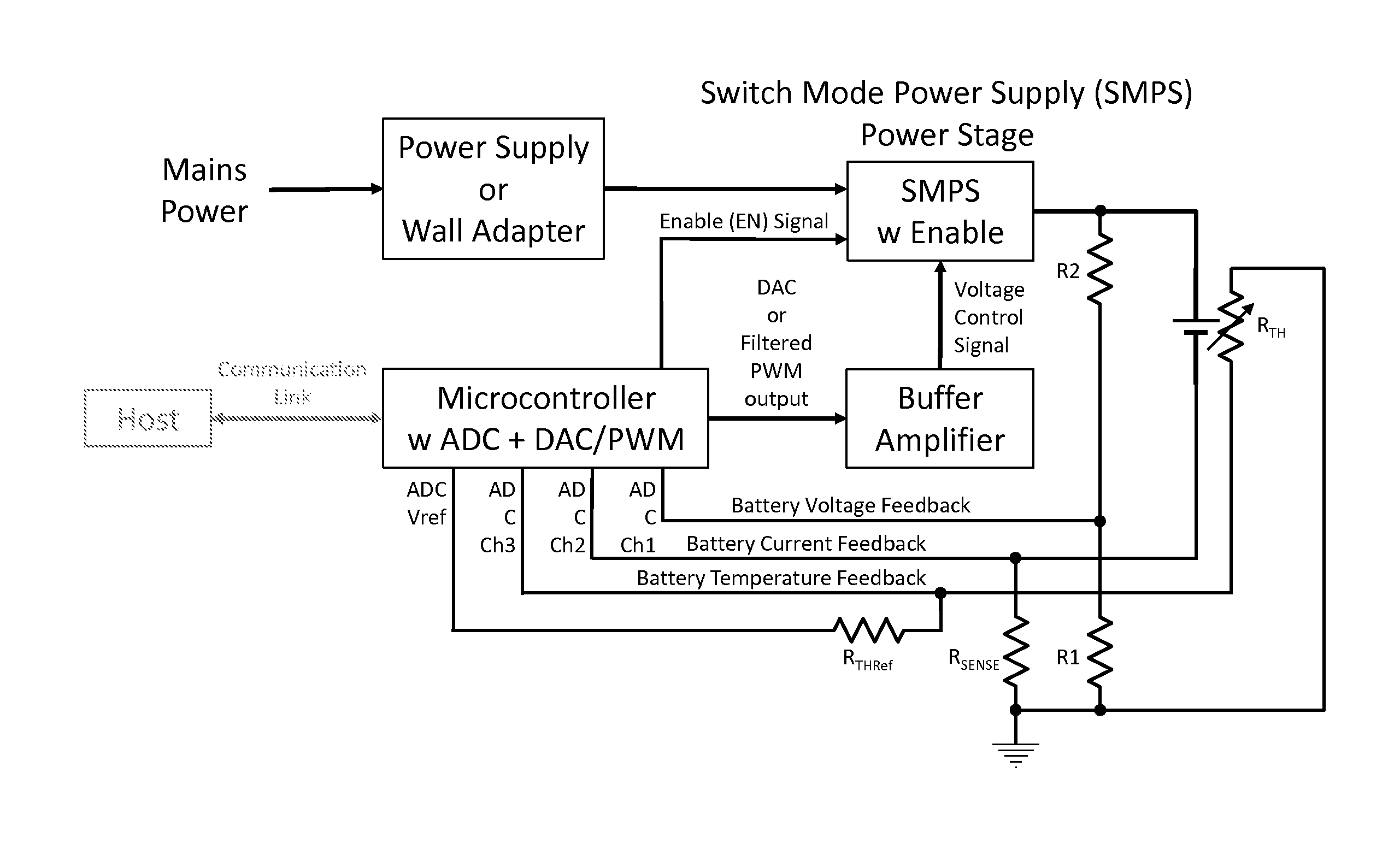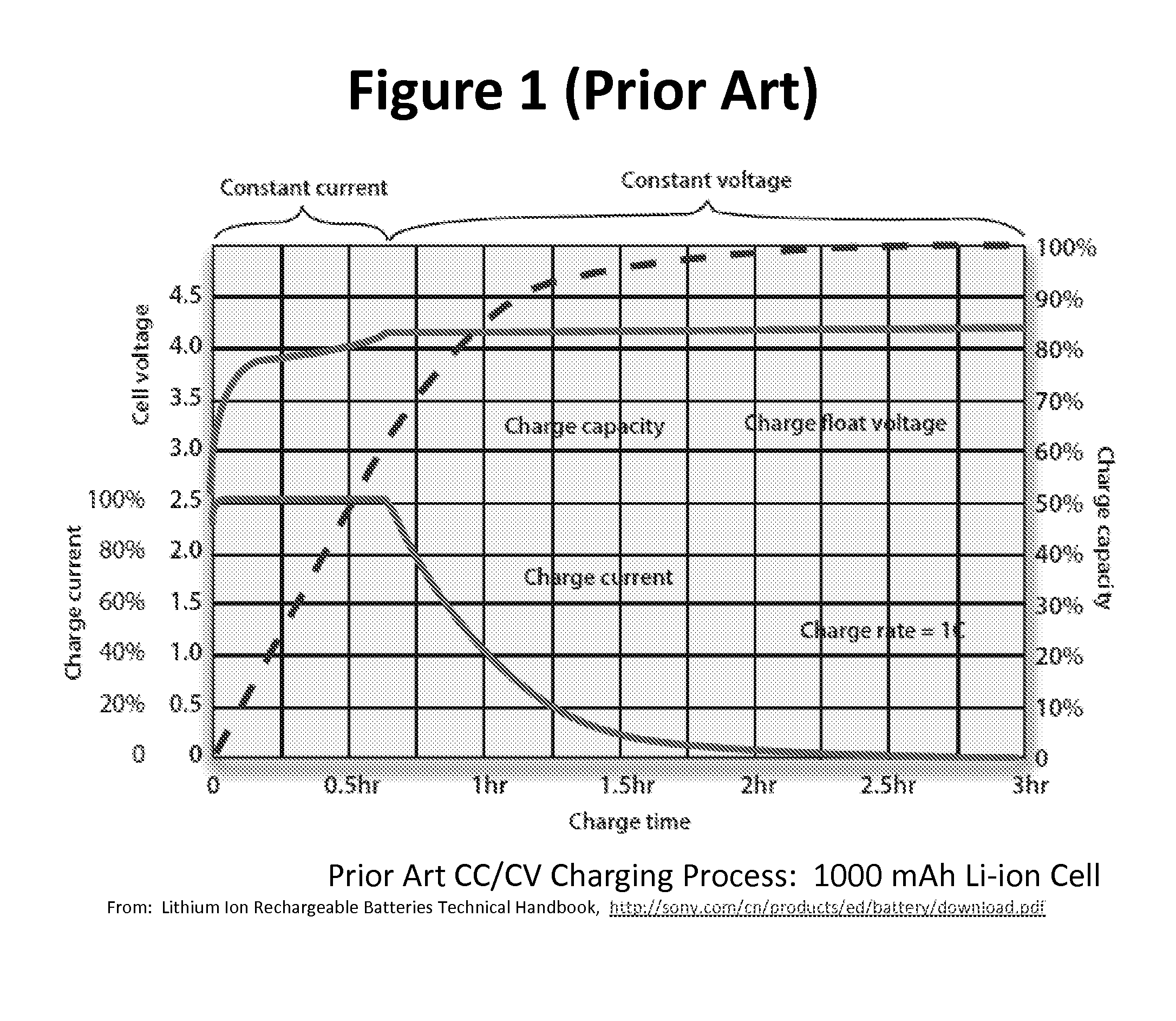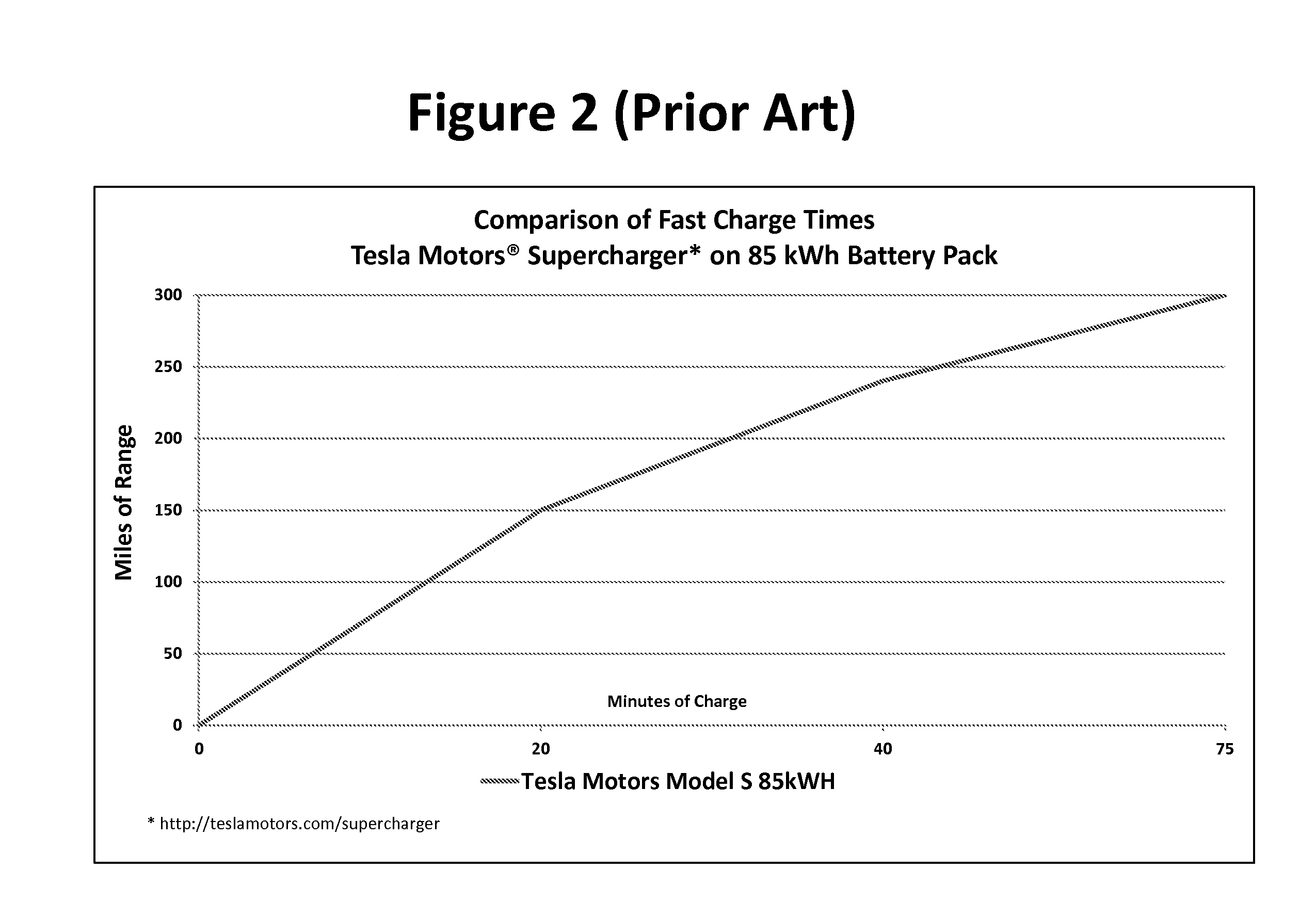Pulse battery charger methods and systems for improved charging of batteries
- Summary
- Abstract
- Description
- Claims
- Application Information
AI Technical Summary
Benefits of technology
Problems solved by technology
Method used
Image
Examples
example 1
[0140]A new 3.7 V 1150 mAH lithium ion “energy” cell for use in mobile devices configured with no protection circuit (Tenergy 503565, Allcell.com) was discharged to 3.0 V at 0.2 V using the off-the-shelf charger / discharger. The discharged cell was connected to the inventive circuit and current sufficient to supply a 1C charge was applied until cell OCVinst reached 4.2V, at which time the current was terminated. The cell was touched periodically during the charging process, and no rise in temperature was noted.
[0141]As shown in FIG. 12, the cell charged for approximately 1 hour at 1C without OCVinst exceeding Vmax. As discussed previously, this OCVinst represents the voltage reading during the OFF-time (i.e., when no charge pulse is applied).
[0142]The voltage response resulting from application of the inventive charging process to the Li-ion cell is markedly different from that resulting from the representative prior art 1C constant DC current applied to a similar mobile device-type ...
example 2
[0145]A new 3.7V 250 mAH lithium ion “power” cell for use in a radio controlled (“RC”) helicopter (Heli-Max®, Amazon.com) with the protection circuit removed was discharged to 3.0 V at 0.2C. The inventive circuit was used to charge the cell at 4C until OCVinst reached 4.2V. The cell was touched periodically during the charging process and no significant increase in temperature was noted.
[0146]As shown in FIG. 13, when charged at 4C, the voltage rise over the course of the charging process was gradual. This result shows that the inventive charging process allows an RC-type cell, which in large respects mirrors the charge / discharge behavior of a Li-ion cell used in EV cell packs, to be charged at a high rate to 100% capacity.
[0147]The offset voltage for this charging process, that is the voltage applied in each pulse in relation to measured OCVinst, was consistently about 250 mV throughout the charging process. The higher offset voltage with this cell is thought to be a result of the ...
example 3
Prophetic
[0149]Tesla Motors® has recently introduced a DC fast charging infrastructure on interstate highways in the US. Tesla Motors has reported that the Model S 85 kWh battery, which has an approximately 300 mile range at 100% SOC, can be charged to 50% in 20 minutes, 80% in 40 minutes, and 100% in 75 minutes using the company's SuperCharger charging system. This translates to an about 1.5C charging for the first 50% SOC, about 0.9C for the next 20 minutes and about 0.34C for the final 35 minutes. It can then be inferred that the reduction in charging rate seen after 20 minutes, and the more marked reduction after 40 minutes results from the characteristic voltage rise from this prior art fast charging process.
[0150]As disclosed herein, the inventive charging process substantially does not cause the characteristic voltage rise seen with conventional DC fast charging. In a prophetic example, the inventive charging process could reduce the time to charge the Tesla Model S 85 kWh to...
PUM
 Login to View More
Login to View More Abstract
Description
Claims
Application Information
 Login to View More
Login to View More - R&D
- Intellectual Property
- Life Sciences
- Materials
- Tech Scout
- Unparalleled Data Quality
- Higher Quality Content
- 60% Fewer Hallucinations
Browse by: Latest US Patents, China's latest patents, Technical Efficacy Thesaurus, Application Domain, Technology Topic, Popular Technical Reports.
© 2025 PatSnap. All rights reserved.Legal|Privacy policy|Modern Slavery Act Transparency Statement|Sitemap|About US| Contact US: help@patsnap.com



